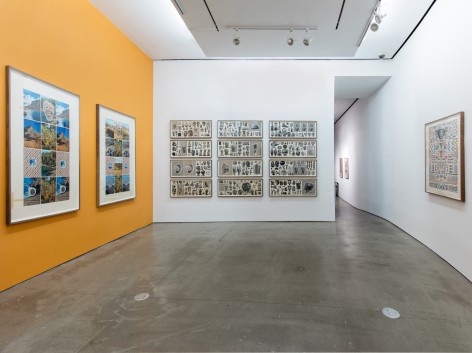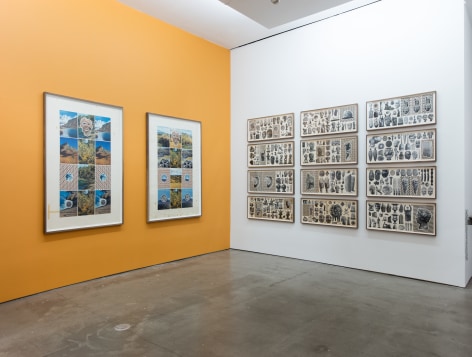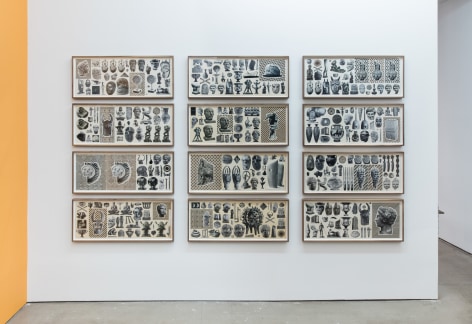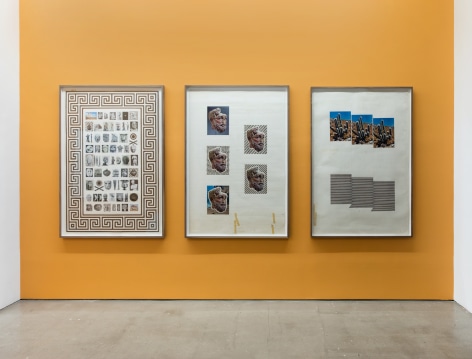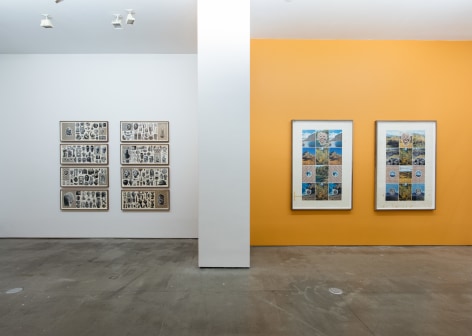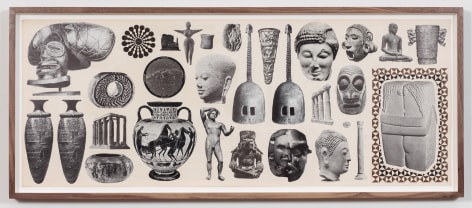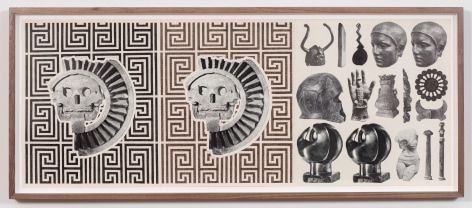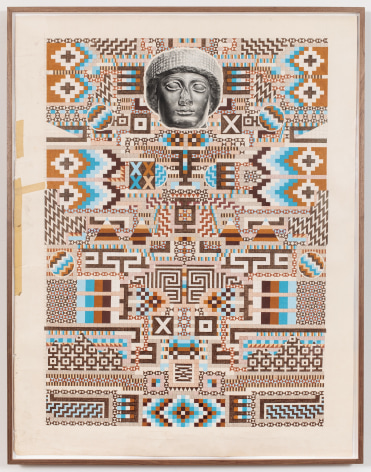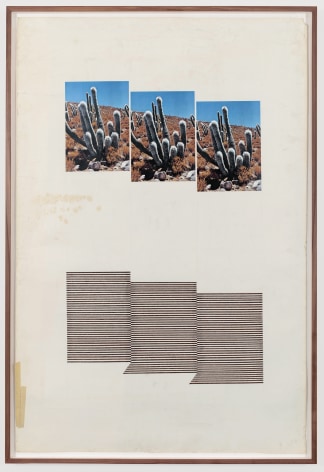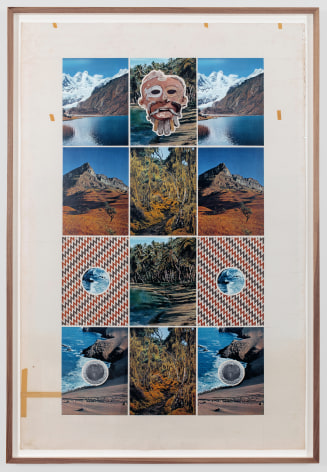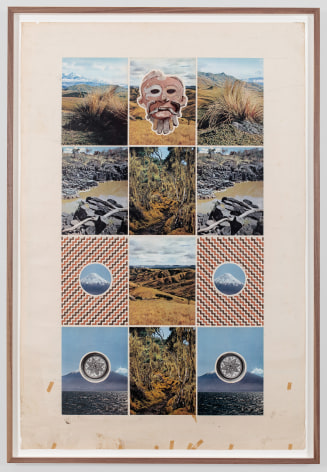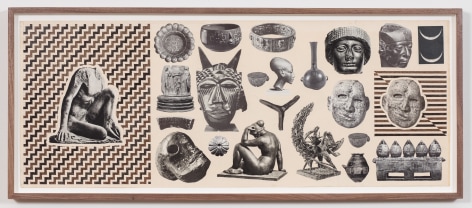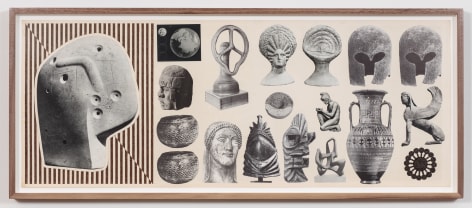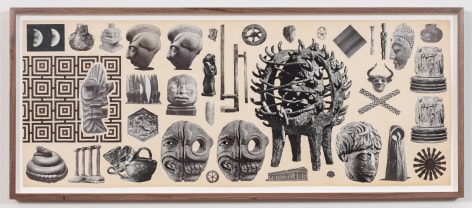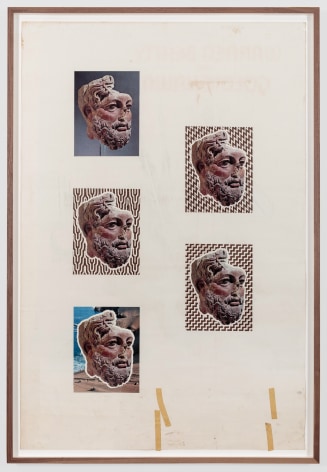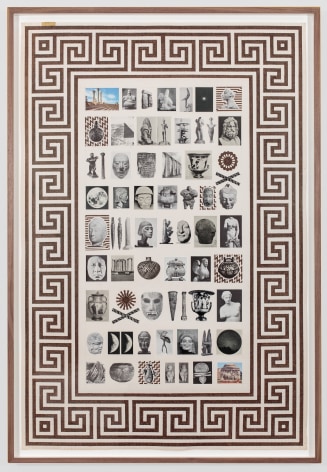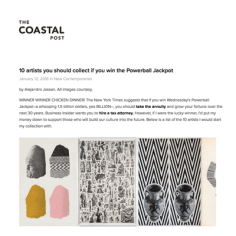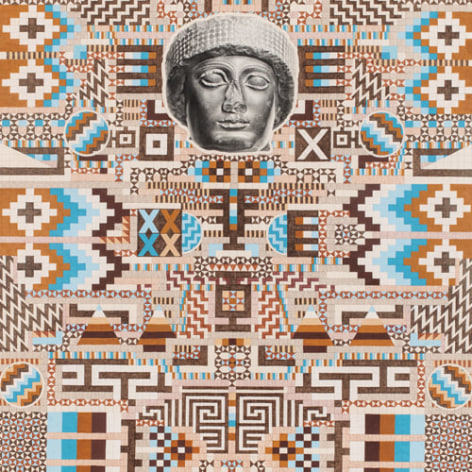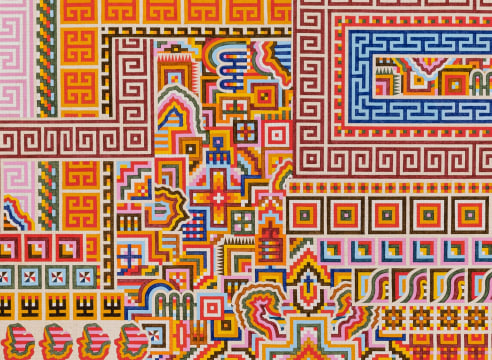
Asya Geisberg Gallery is proud to present “QUIET EARTH”, an exhibition of works on paper by Matthew Craven. Craven combines found images of antiquity with abstract hand-drawn patterns of ambiguous origin, and often paints walls to emphasize oblique aesthetic choices that personalize his project. Voracious in his curiosity and controlled in his choice of placement and mark, the artist creates enigmatic combinations, that despite their encyclopedic nature, force curiosity about each specific reference.
In “QUIET EARTH”, a series of same-sized works rhythmically repeats a flattening of time and scale. Guessing at the origin of each image takes the viewer on a trajectory, decoding a mystery, or entering a wormhole of confusion. Is that a Brancusi sculpture, an African wood carving, or a Neolithic tool? Buildings grow comically tiny, amulets loom large, faces could be temple friezes or wax seals. Mirroring, outline, repetition, and odd composition push the work beyond an ode to antiquity. Above all, Craven relishes in patterns and ideas reappearing in different eras, suggesting a unity of inspiration.
Supremely attentive to physicality, Craven begins on an aged background, often vintage movie posters with yellowing tape, and cuts images from old books that are never glossy. As his collages compress millennia by placing the prehistoric next to the modern, they dance around time: the distance between the image’s creation and our grasp of its significance, the hours searching for appropriate materials, the cultivation of isolated fragments before integration into Craven’s universe. Archival preservation wistfully reminds us of a book’s pleasure, as classrooms become digital, and search engines dispense with the encyclopedia. In turn, this underscores the eventual death of cultures Craven cites. Multiple resuscitations abound - most obviously the insistence on time-consuming hand-drawn lines.
Several new works use the landscape, colorful and present, as a sparring partner to the silent man-made artworks, adding a visual disruption that paradoxically adds a further unifying context. We exist today because of our pre-historic past, and all cultures share the same planet. From a greater distance, the differences melt away, and just as all landscapes share underlying structure and forms, so too do Craven’s stone temples, monuments, and patterns. Craven’s omnivorous approach and distilled creations reassure and mystify. We are one, and yet.

